The Gift of South Dakota
Subscriptions to South Dakota Magazine make great gifts!
Subscribe today — 1 year (6 issues) is just $29!
West River Oasis
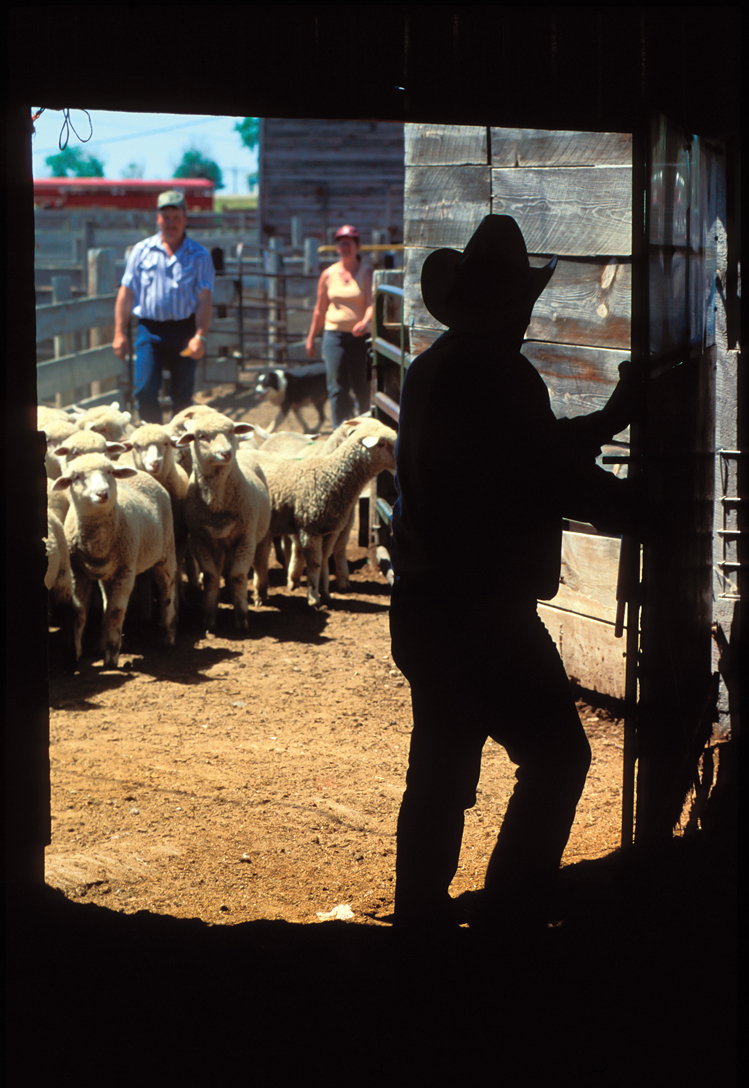 |
| “Cattle for respect, sheep to pay the bills,” goes an old West River axiom. It was probably coined by a sheep man at Newell, where weekly sales are held every Thursday. The annual show and sale dates back to the 1940s. Photo by Greg Latza. |
If you consider the Black Hills home, maybe you’ve got a soft spot in your heart for Newell. Perhaps you’ve returned home across the prairies via Highway 212, from points north and east, and have spotted this town with Bear Butte as its backdrop, and with the Black Hills defining its southern and western horizons.
“Almost home,” you’ve said to yourself.
Not quite. Despite its proximity to the Hills, Newell claims a separate history. It came into being more than 30 years after Rapid City, Sturgis, Spearfish, Deadwood and Lead were founded. Frederick Newell, a U.S. Bureau of Reclamation chief engineer, inspired the name. In 1902 President Theodore Roosevelt had established the Bureau of Reclamation in hopes of transforming dry western expanses into fields of crops. Among the Bureau’s first projects was damming Owl Creek in Butte County, creating one of the world’s largest earthen dams, 6,262 feet long and 122 feet high. Water would be diverted from the Belle Fourche River into the reservoir, and there would be more than 500 miles of irrigation canals and laterals channeling this water to virgin croplands. The Newell town site sat in the middle of some of the most promising countryside. As the dam progressed, this land sold for as much as $25 an acre, a price most South Dakotans considered sky high.
In 1907 the Bureau of Reclamation developed an “Experiment Farm” at the town site. The farm would research crops best suited for local soils, and later it would train young people who were interested in agriculture. The year 1910 saw the dam’s completion and construction begin for Newell’s first homes and businesses.
Churches went up too. Father Wenzel Sobolewski served multiple Catholic churches and sometimes faced frontier-like conditions in traveling from one to another. On foot outside Newell in 1916 or 1917, he found himself in danger of freezing, desperately lost in a blinding blizzard. But, he later recalled, “God was with me and guided me to a barn, where I found myself draped around the neck of a cow.”
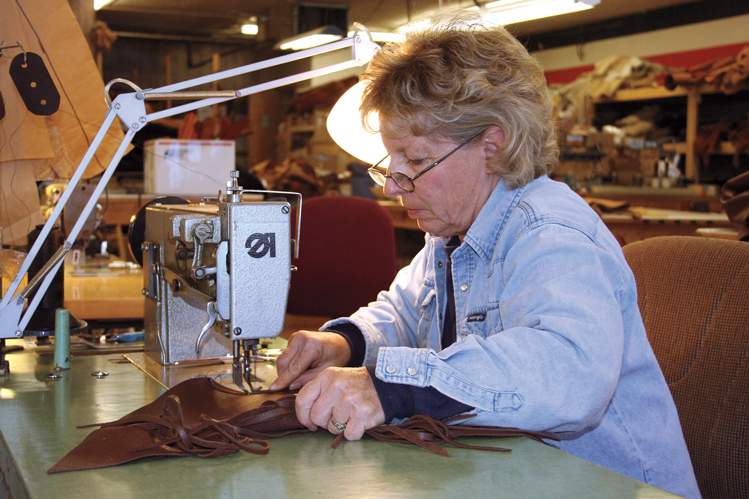 |
| Karen Swan and her associates at K-J Leather Company sew chaps, saddlebags, chinks and other tack for working cowboys. |
In Newell’s early years there were always outside critics who considered the land there best suited for such cows, even though good crops of corn and grain were growing, along with produce entirely new to the region: cucumbers, pinto beans and sugar beets. But, some observers wondered, were those products worth all the government expense — more than $2 million for the dam’s construction alone? In the 1920s, when farm profits were down everywhere, and in the 1930s when more dust than water filled the reservoir, the criticism seemed valid. Then the rains returned. By the late 1940s local farmers were enjoying banner years and were in a position to manage and maintain the irrigation system themselves, rather than watching the government run it. In 1948 landowners formed a board of directors and made Newell irrigation district headquarters. Today corn and alfalfa dominate the 57,000 irrigated acres, and there are fields of wheat and oats. To the delight of loyal aficionados, the Newell area is also known for honey derived from clover.
Not only is water from the irrigation system the area’s lifeblood, but irrigation has always been central to Newell’s identity. When Black Hills high school athletes say they’re heading north to play the Newell ‘Gators, South Dakotans know the team name doesn’t refer to a big reptile.
Step into TJ’s Cafe and Waterin’ Hole to meet Neil Vollmer and Ken Wetz for coffee, and you’re guaranteed some funny stories and Newell area history. But mostly these men are focused on contemporary life and future opportunities. Vollmer owns an insurance business and is president of the Newell Economic Development Corporation. Wetz, manager of the Butte Electric Cooperative, is a former mayor and state legislator, and along with Vollmer, a driving force behind the development corporation for its entire 15-year history. Thanks to that organization’s volunteer work, Newell got behind a successful effort to re-open its grocery store after it closed for about a year in the 1990s. The group has also recruited industry. Aker Woods Company, a Black Hills company manufacturing items ranging from roof beams to classroom products, needed a milling and cutting site, and Newell got the nod. “It was the quickest community to have a place for us, and the most welcoming,” says owner Alan Aker. The friendly attitude also won over K-J Leathers, which moved into a downtown building to manufacture high-quality chaps, chinks, saddlebags and tack. Rodeo competitors and working cowboys and cowgirls throughout the West know K-J Leather products well.
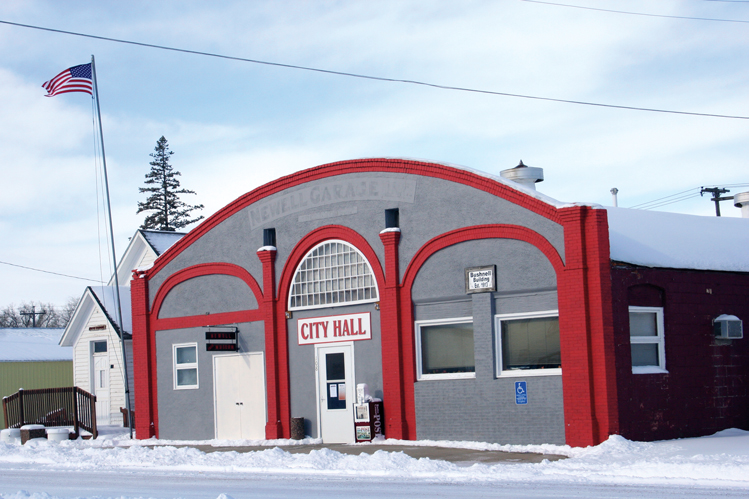 |
| Newell’s community leaders have aggressively recruited small industry, and the resulting jobs have kept the town’s population stable at about 650, bucking rural trends. |
A Newell industry that predates the economic development corporation is Boom Concrete. Founded by Newell native Craig Van Der Boom in 1964, the company earned a reputation for its cement stave silos sold across South Dakota. Now Craig’s son, Troy, runs the company, well respected today for its virtually indestructible picnic tables and rock-exterior restrooms found at South Dakota’s state parks and recreation areas.
Other businesses and services that are key employers include the school district, Butte Electric Cooperative and the irrigation district. Residents have always commuted into Black Hills communities for work, too. Positions at Fort Meade Veterans Administration Hospital, 25 minutes down Highway 79, are especially attractive. Newell’s population is about 650, and Vollmer and Wetz say that figure has held pretty steady over the past 20 years.
Summer visitors pass through town for boating and fishing at the reservoir. There’s little evidence that irrigation boosters 100 years ago saw much potential for recreation on the waters, but it’s been a huge economic boost over the years. People ask for directions to Orman, always the dam’s unofficial and locally preferred name; it refers to a Colorado contractor who got the original bid for the big government project. Officially the name remains Belle Fourche Dam.
Newell has always been able to attract area farmers and ranchers looking to retire in town. Once in a while someone from far away — drawn to Orman for boating, perhaps, or just driving down highways 212 or 79 — decides to make Newell home, too. “They’re people looking for a laid-back way of life and for safety,” Vollmer says.
“What attracts them in the summertime is our green lawns and gardens, and our trees,” adds Wetz. “Because of the irrigation district, we look a little different than some towns in western South Dakota.”
Newell homeowners can access irrigation waters, piped through town, for just $3 a month. One retired rancher told Wetz he spent his whole life “trying to grow grass on the prairie, and now I have to mow the damn stuff.”
One of Newell’s most pleasant amenities is its nine-hole golf course, on the town’s north side. Irrigation waters have been put to creative use; golfers tee off and putt alongside the waters of a small dam. Writing a town history for Newell’s centennial in 2010, Wetz was surprised to learn that golfers have played at that spot since 1910. “We were golfing before we had electricity,” he observes.
Fall is a busy time in Newell, beginning with a Labor Day celebration that’s featured a rodeo the past 55 years. It may be the world’s only rodeo to showcase sheep tipis. As veteran sheep producers know, a tipi in their industry is a tent that shelters a ewe and new lamb in case of bad weather on the prairie, or forces ewe and lamb togetherness when a ewe rejects her lamb. The timed rodeo event involves teams of two people, one who erects the tipi and the other who collects the animals and gets them into the tent.
“We call our rodeo the sheep tipi-ing world’s championship,” Vollmer says.
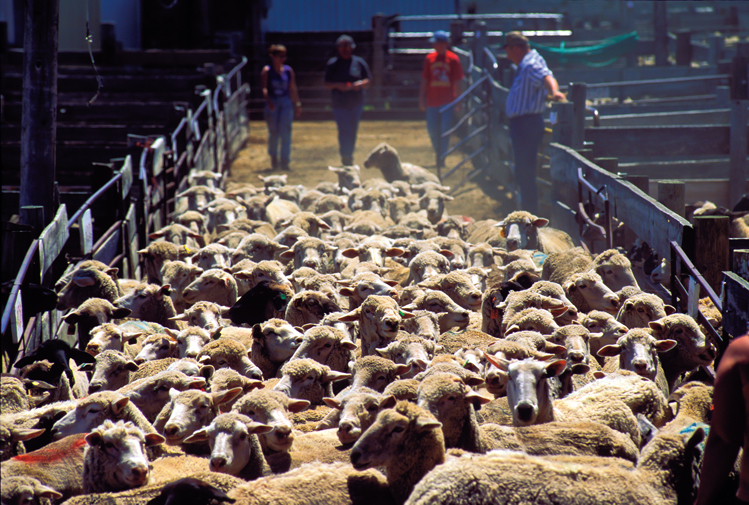 |
| The Newell Ram Show attracts ranchers from four states. Photo by Greg Latza. |
In some ways Labor Day feels like a warm-up for the big Newell Ram Show and Sale, always held the third Friday in September. First organized by community leaders in 1946, the event has succeeded in meeting its original goal: improving sheep flocks in South Dakota and neighboring states by making the best breeding stock available close to home. Consignors show up with high quality stud rams, registered ewes and purebred range rams. Area sheep producers say the show and sale has helped them remain nationally competitive over the years, as they’ve faced fluctuating prices, foreign wool competition and more artificial fibers.
Big as Labor Day and the Ram Show and Sale are, a series of more spontaneous events epitomize Newell. The next time you’re headed to the Hills on Highway 212 and you come upon the town, roll down your windows and sniff the air for pancakes. It’s possible that Newell holds the world’s record for dollars raised per capita by pancakes. Anytime there’s a serious illness or accident involving Newell residents, you can count on the Lions Club to stage a free will donation pancake supper. You can also count on seeing the omnipresent Vollmer and Wetz flipping the cakes. There are big pancake dollars behind a community ambulance, and behind the building that houses the ambulance.
“Those suppers have been happening for years,” Vollmer says, “and people keep coming, responding to whatever need Newell has.”
Editor’s Note: This story is revised from the January/February 2011 issue of South Dakota Magazine. To order a copy or to subscribe, call (800) 456-5117.


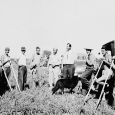
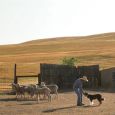

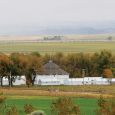

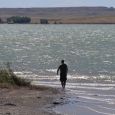


Comments